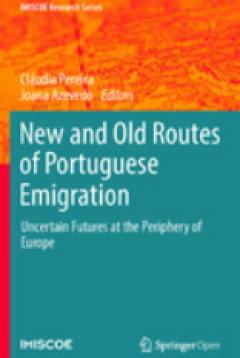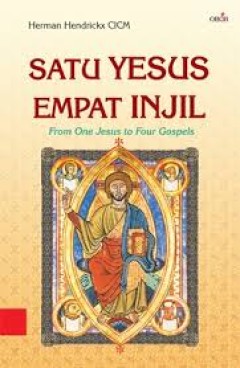Ditapis dengan
E-book The China Alternative : Changing Regional Order in the Pacific Islands
The Pacific Islands region has entered a new period of uncertainty precipitated in large part by the emergence of China as a major regional actor as well as the reaction of more established powers to perceived threats to their longstanding influence. In March 2019, in the wake of a flurry of activity on the part of Australia, New Zealand and the United States …
- Edisi
- -
- ISBN/ISSN
- 9781760464172
- Deskripsi Fisik
- 520 hlm
- Judul Seri
- -
- No. Panggil
- 320 AQO t
E-book Essays on Paula Rego : Smile When You Think about Hell
In the words of one of her exegetes, Paula Rego enters the Great Tradition of art by the back door, and once there lays down repeated visual statements concerning a binary world whose territorial lines are demarcated by the battle of the sexes (Rosengarten, 1999a, 6). In this pictorial universe, whose referent is realpolitik patriarchy, sex…
- Edisi
- -
- ISBN/ISSN
- 9781783747580
- Deskripsi Fisik
- 513 hlm
- Judul Seri
- -
- No. Panggil
- 750 MAN e

E-book Contemporary Challenges in Securing Human Rights
Since 1948, the study of human rights has been dominated by legal scholarship that has sought to investigate the development of human rights law, emerging jurisprudence, regional systems, the decisions and recommendations of human rights mechanisms and institutions and to a lesser extent the ‘compliance gaps’ between state commitments and actions. Even so, in all of these spheres there are …
- Edisi
- -
- ISBN/ISSN
- 9780993110221
- Deskripsi Fisik
- 166 hlm
- Judul Seri
- -
- No. Panggil
- 341.48 LEN c

Norms beyond Empire : Law-Making and Local Normativities in Iberian Asia, 150…
Although they constantly shape behavior and nudge people to act in certain ways, norms tend to be taken for granted. Taking off shoes or removing a hat when entering a sacred space are not merely the result of individual decisions made upon crossing the threshold of a temple; they are appropriate ways of acting in that specific context and they signal conformity with a norm. This can also be no…
- Edisi
- -
- ISBN/ISSN
- 9789004472839
- Deskripsi Fisik
- 367 hlm
- Judul Seri
- -
- No. Panggil
- 946 SAA n

E-book New and Old Routes of Portuguese Emigration : Uncertain Futures at the…
Few studies have addressed recent emigration from European countries. The refu-gee crisis and migratory pressure have helped keep academic attention over the last few decades focused on immigration, asylum, reception and integration in Europe. However, these dynamics promoting entries into European countries coexist with other fairly significant dynamics promoting departures fro…
- Edisi
- -
- ISBN/ISSN
- 9783030151348
- Deskripsi Fisik
- 300 hlm
- Judul Seri
- -
- No. Panggil
- 304.82469 ABR n
E-book Global History and New Polycentric Approaches : Europe, Asia and the A…
We believe that by joining forces and harmonizing diverse theories, sources and methods of different academic traditions like those from China and Japan, the field of global history receives a new impulse through diverse case studies. The constant participation of special-ists in this field is crucial, as they share their experiences and new …
- Edisi
- -
- ISBN/ISSN
- 9789811040535
- Deskripsi Fisik
- 367 hlm
- Judul Seri
- -
- No. Panggil
- 909.5 DEP g
E-book How Green is a "Green City"? : A Review of Existing Indicators and App…
More than half of the world’s population currently lives in cities and this share is to increase to 75?% by 2050. Today the most urbanized regions are Northern America (82?%), Latin America and the Caribbean (80?%), and Europe (73%) (FAO, 2015). The growing population of urban centers and the contributions of urbanization to global environmental change have increased the attention to the sust…
- Edisi
- -
- ISBN/ISSN
- -
- Deskripsi Fisik
- 28 hlm
- Judul Seri
- -
- No. Panggil
- 712.5 PAC h
E-book Blood, Land and Power : The Rise and Fall of the Spanish Nobility and …
Western and eastern values of society underscore the family as a fundamental social structure and institution.1 The family reveals the most significant sociocultural features of European communi-ties in a given context, and these become central communication channels back to the family. This idea asserts James Casey’s axiom that family and society are part of a single unit.2The family is at t…
- Edisi
- -
- ISBN/ISSN
- 9781786837110
- Deskripsi Fisik
- 364 hlm
- Judul Seri
- -
- No. Panggil
- 946 PER b
E-book Emerging Threats of Synthetic Biology and Biotechnology : Addressing S…
Synthetic biology raises the possibility that pathogenic bioweapons could be designed, developed, and deployed in new ways that diverge from the disease-causing characteristics of naturally occurring pathogens (NAS 2018). Traditionally, only known pathogens found naturally in the environment, such as B. anthracis and Y. pestis, were developed as biological weapons because o…
- Edisi
- -
- ISBN/ISSN
- 9789402420869
- Deskripsi Fisik
- 233 hlm
- Judul Seri
- -
- No. Panggil
- 610.28 TRU e
E-book World Christianity : Methodological Considerations
The brief literature review above demonstrates the necessity of a compre-hensive inquiry into the methodological ramifications of the “world-Christian turn”. This volume gives methodology the center stage and aspires to spark the debate on methodology. To that end, we as editors have purposely invited a diverse group of contributors from a variety of academic backgrounds (anthr…
- Edisi
- -
- ISBN/ISSN
- 9789004444867
- Deskripsi Fisik
- 328 hlm
- Judul Seri
- -
- No. Panggil
- 230 FRE w
E-book Trade and Employment : From Myths to Facts
Those numbers, however, do not indicate that interviewees have an entirely negative perception of globalization. Indeed, evidence based on surveys that make a distinction between growth and employment impacts of globalization reveals that a majority of respondents in industrialized countries believes in the positive growth effects of globalization that are so often emphasized in the public deba…
- Edisi
- -
- ISBN/ISSN
- 9789221253211
- Deskripsi Fisik
- 318 hlm
- Judul Seri
- -
- No. Panggil
- 381 JAN t

Satu Yesus empat Injil = From one Jesus to four Gospels
Banyak orang mengaku diri seabagai pengikut Yesus, allah yang menyejarahdan terlibat aktif dalam sejarah umat manusia. Namun, pengetahuan dan pengenalan yang mendalam tentang siapa Dia itu sesungguhnya masih tetap merupakan suatu permasalahan iman yang serius dan aktual. Buku Satu Yesus Empat Injil ini untuk membantu umat beriman Kristiani agar semakin mengenal dan mencintai keempat Injil yang…
- Edisi
- cet. 2
- ISBN/ISSN
- 9789795657583
- Deskripsi Fisik
- xiii + 216 hlm. 14 x 21 cm
- Judul Seri
- -
- No. Panggil
- 232.9 HEN s
 Karya Umum
Karya Umum  Filsafat
Filsafat  Agama
Agama  Ilmu-ilmu Sosial
Ilmu-ilmu Sosial  Bahasa
Bahasa  Ilmu-ilmu Murni
Ilmu-ilmu Murni  Ilmu-ilmu Terapan
Ilmu-ilmu Terapan  Kesenian, Hiburan, dan Olahraga
Kesenian, Hiburan, dan Olahraga  Kesusastraan
Kesusastraan  Geografi dan Sejarah
Geografi dan Sejarah